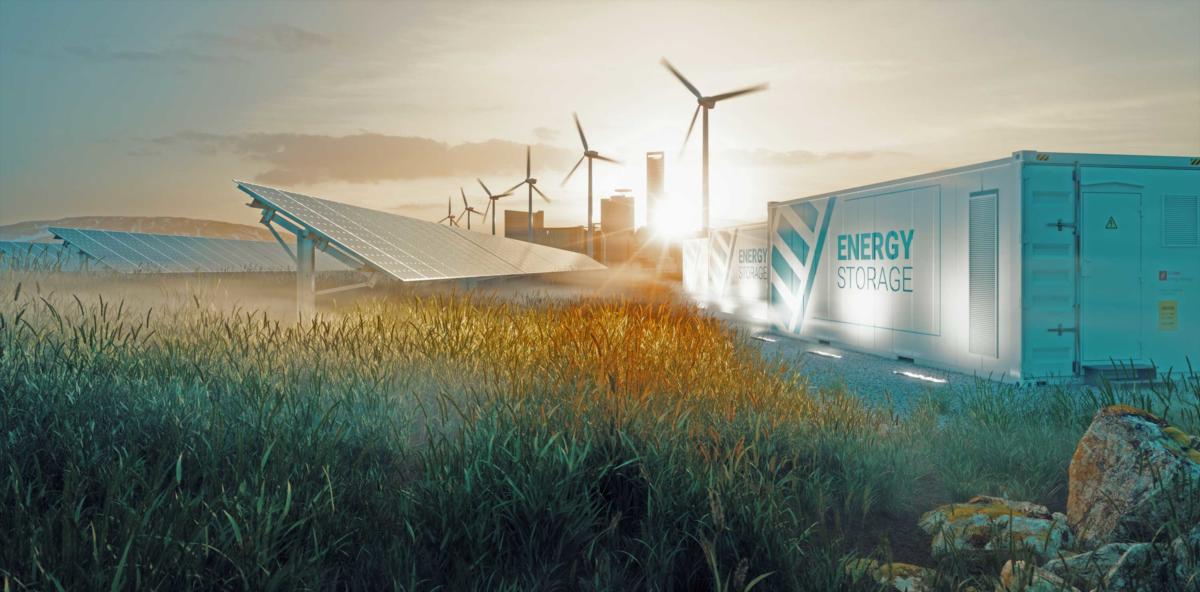After several decades of deployment in remote, off-grid locations — often in developing countries — microgrids have moved into the mainstream of industrialized countries. Key drivers of the newfound acceptance by developers include extreme weather events, declining costs, standardized components, new business models that facilitate financing and increased acceptance and interest from utilities.
In 2019, Guidehouse Insights (formerly Navigant) reported a global microgrid value of an estimated $8.1 billion (USD) and Asia Pacific as the largest regional market. In 2020, Guidehouse found that North America had overtaken the Asia Pacific region, spurred by rapid adoption on the part of the commercial and industrial (C&I) sector. 
While remote, rural microgrids are still the most widespread application globally, C&I microgrids in industrialized countries will likely surpass that sector soon, according to Guidehouse. This shift is motivated by the need for resilient power systems in the face of climate change.
The second quarter 2021 Guidehouse report highlights significant growth in the Energy-as-a-Service (EaaS) microgrid segment, representing $3.3 billion in 2021. Over the next nine years, the segment is projected to increase almost eightfold to $25.9 billion annually by 2030.
Extreme weather biggest driver for microgrid industry growth
Weather disasters such as West Coast wildfires and destructive hurricanes on the Gulf Coast and in the Northeast have driven the rise in North American microgrid investment over the last two years, reported Wood MacKenzie recently. The states where these events occurred are now the leading investors in microgrids.
According to the National Oceanic and Atmospheric Administration, the annual cost of extreme weather events is accelerating rapidly. As of July 2021, eight severe weather disasters have already hit the U.S., and the total losses incurred by entities and citizens for each event exceeded $1 billion.
The frequency of severe storms is also on the rise. Between 1980 and 2020, an average of seven severe storms occurred annually. However, from 2016 to 2020, the occurrence of these weather events more than doubled to an average of 16 each year.
Standardization of distributed energy resources
Wood Mackenzie cites standardization as the second most significant driver for microgrid growth over the last two years. The firm’s analysis showed that the increase in non-custom microgrids coincided with an increase in the installation of microgrids smaller than 2 MW in the C&I sector.
New business models reduce the challenge of financing microgrid projects
The Energy-as-a-Service (EaaS) business model ranks as the third most important driver of microgrid growth, according to Wood Mackenzie. EaaS requires a less substantial upfront capital investment and transfers the cost of microgrids to the far more palatable operating expense category.
Easing the burden of high upfront costs is particularly important for C&I customers, who want to focus on core business needs without becoming experts in energy generation. In an EaaS project, experienced microgrid developers, federal and local governments and other stakeholders can do the complex work of developing and building the microgrid, while the project owner handles monthly energy bills as operating expenses over the entire life of the system—spreading out the cost over time.
Despite the growth and diversification in the number and types of organizations that develop microgrids, the technology has continually faced hurdles. Some examples include restrictive regulatory policies and utility companies that expected microgrids to threaten grid stability and revenues, according to a Guidehouse report on utility microgrids.
However, that perception is changing. Utilities are beginning to embrace microgrids as a way to improve grid stability and enhance revenues by avoiding or delaying expensive infrastructure upgrades.
Guidehouse estimates that the market for utility sponsored microgrids will grow from $2.3 billion in 2020 to about more than $10 billion by 2029.
Utilities eye microgrids as a means for overcoming challenges
Rapid advances in electric transportation are driving the investment in microgrids by utility companies. The increased use of electric vehicles (EV) will, in turn, increase demand for clean electricity from power distribution systems already at or near maximum capacity.
This growth in EV charging puts increased pressure on the need for additional and improved electrical infrastructure. For example, the non-profit International Council on Clean Transportation reported that the United States will need to invest more than $2.2 billion from 2021 through 2025 in EV charging infrastructure to keep up with market growth. Analysis by the National Renewable Energy Laboratory shows that in high-electrification scenarios, by 2050 installed generation capacity would have to double 2018 levels to meet electricity demand.
Carbon reduction a key motive for utility investments in microgrids
Steve Mitnick, Public Utilities Fortnightly executive editor, wrote in a recent editorial that by early 2020, many U.S. utilities had committed to cutting their carbon emissions. A year later, most have not only achieved those goals but also increased that challenge to aim for net-zero emissions — something that utility companies considered to be unrealistic until recently.
In addition, Smart Electric Power Alliance reported in the 2021 Utility Transformation Profile that the dozen utilities leading the way in decarbonization have all created challenging and specific carbon reduction goals, a prerequisite for their success and an important motive behind microgrid development.
While the U.S. leads the world in grid-tied microgrid innovation, many utilities around the world are also moving toward large-scale hybrid power systems as they confront extreme weather events, costly outages and unreliable grids. Looking ahead to the next two years, Wood Mackenzie predicted that the top driver for microgrid growth will continue to be concern regarding extreme weather events.
As a second factor, Wood Mackenzie cited the support of U.S. President Biden’s administration for microgrids and renewable energy. In fact, the latest $1.2 trillion Infrastructure Investment and Jobs Act — recently passed by the Senate and now in review by the House of Representatives — includes a section on grid infrastructure and resiliency. The bill funds the construction of a network of electric vehicle chargers and is likely to boost microgrid deployment.
And last but certainly not least, the continued costs decline of solar and storage as well as market expansion are the third future drivers of microgrid growth. According to Wood Mackenzie, the cost of solar modules has dropped by 90% over the past decade.
Additionally, the Energy Storage Association predicts that the storage market will continue its blistering growth rate, from $1.5 billion in 2020 to $7.6 billion in 2025. In an important change from the past, front-of-the-meter, utility-scale deployments will make up the bulk of the North American storage market.
Learn more 
Don’t miss critical updates from global authorities on the fast-growing world of microgrids. Join us Oct. 12-14, 2021, for the ninth annual HOMER Microgrid and Hybrid Power International, presented by HOMER Energy by UL. This year’s conference theme, Powering the New Energy World, includes six separate online sessions over three days. Registration is complimentary on the conference website.
